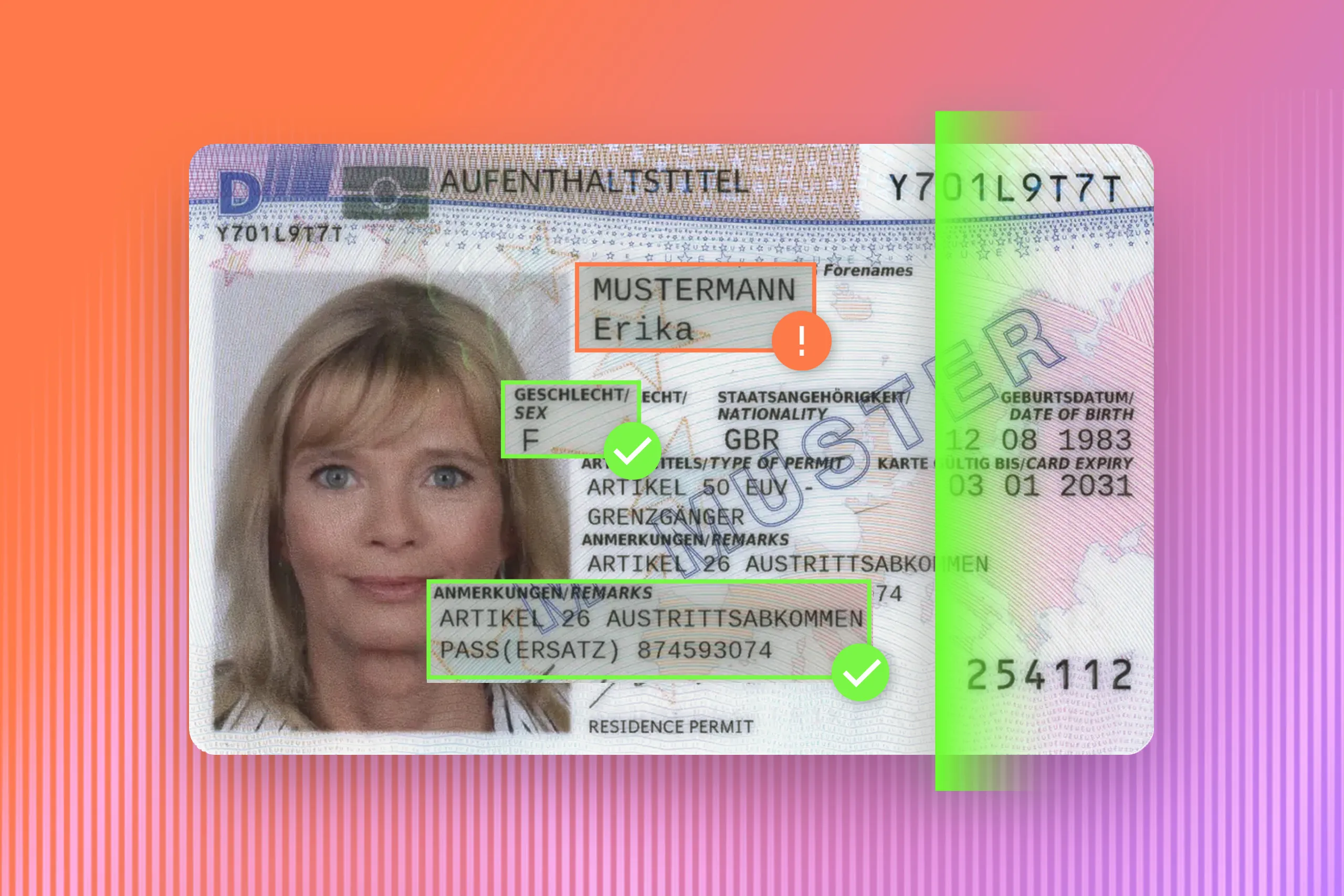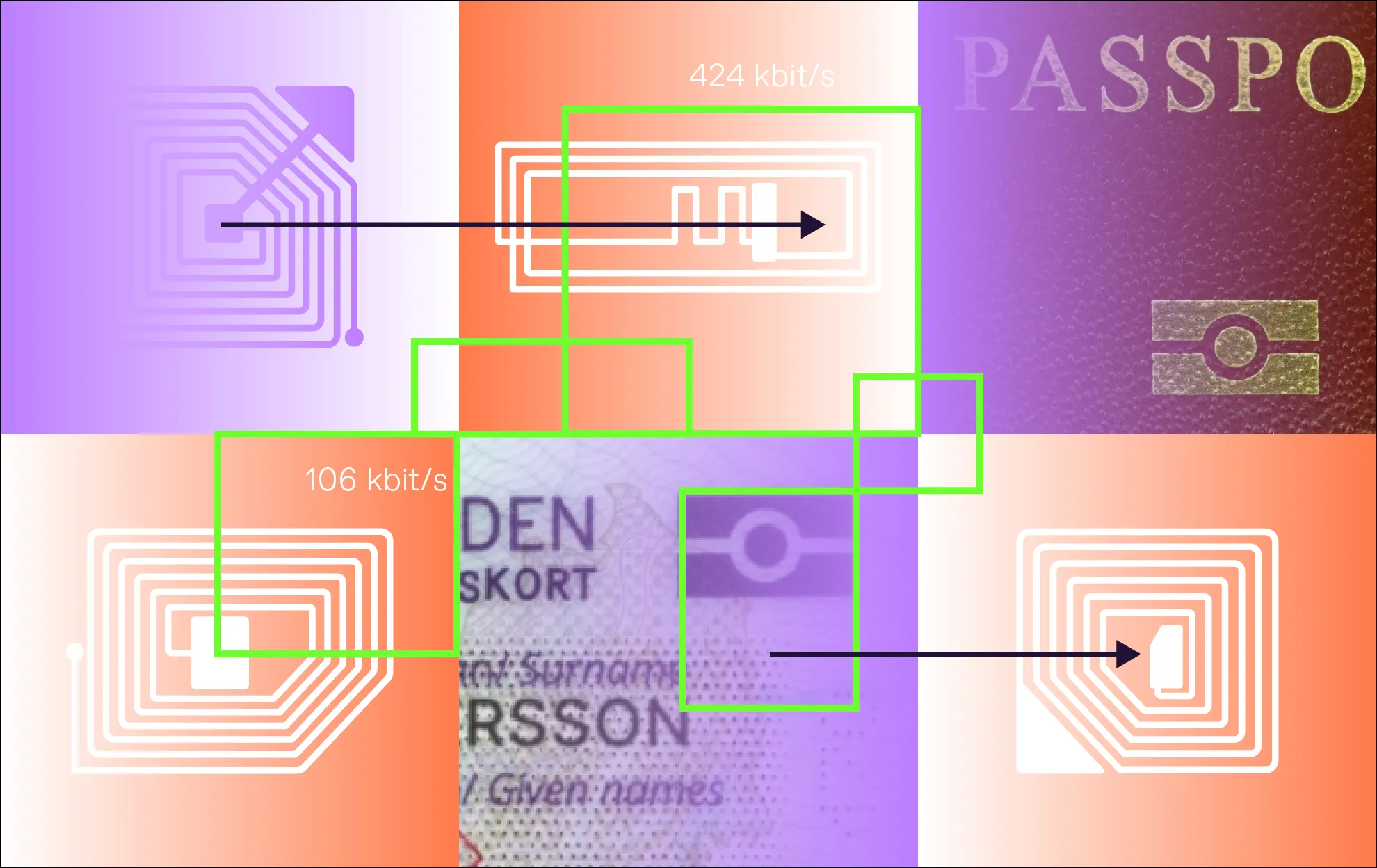Passports and driver’s licenses often take the spotlight, but national identity cards are just as common for identity verification.
A “common ID” is typically associated with a standardized process. However, verifying identity cards—like any form of ID—is far from 100% predictable.
In this blog post, we’ll explore all sides of ID cards—both literally and figurativly—and offer practical tips for effective authentication.
💡Curious about other ID documents and what makes them unique?
Read our expert reviews of:
Get posts like this in your inbox with the bi-weekly Regula Blog Digest!
Which types of ID cards can businesses handle?
ID cards are a prime example of domestic documents—and often the most interesting, both visually and in terms of how they’re used.
When classifying all ID cards in circulation, we can group them into three main categories. Each category includes two opposing types.
1. ICAO-compliant vs. non-interoperable ID cards
ID cards, classified as ID1 or TD1 machine-readable travel documents (MRTDs), are specified in ICAO’s Doc 9303 (Part 5) and other global standards, such as ISO/IEC 7810:2019.
ICAO-compliant documents are primarily defined by the personal and document-related data they may contain, as well as their layout and dimensions.
Typeface, font size, line spacing, supported languages, and character sets for ID cards are outlined in Doc 9303, Part 3, and are applicable to all MRTDs.
When it comes to content, ICAO-compliant ID cards include both mandatory and optional datasets. For example, required personal details include name, gender, nationality, and date of birth. Mandatory document-related elements are issuing authority, document number, and expiration date. Optional fields may include eye color, height, or a national healthcare ID number.

In addition to the ICAO-recommended dataset, the 2024 series of the Portuguese ID card contains three identification numbers on the reverse side.
All ICAO-compliant cards must include machine-readable elements, primarily a machine-readable zone (MRZ) of three lines with 30 characters in each. This MRZ qualifies the document as an MRTD—making it valid for international travel.

Slovenia, like other EU countries, issues ICAO-compliant ID cards (shown above is the 2022 series) that are valid for travel within the EU.
Despite differences in design, color schemes, and security features, standardized ID cards are “familiar” to identity verification software. Optical Character Recognition (OCR) engines are trained to find data in predictable locations.
Recognition becomes more difficult with documents issued under domestic rules, requiring a more advanced ID card verification system. These non-interoperable documents aren’t designed for international use, and are typically valid only within the issuing country.
Key differences from ICAO-complaint IDs include non-standard layouts and the absence of required elements like the MRZ.

The layout of the Malaysian ID card does not comply with ICAO standards. It also lacks an MRZ on the reverse side, which poses a challenge for some ID card verification systems.
However, some non-interoperable ID cards may still be accepted under bilateral or regional agreements. For instance, citizens of Gulf Cooperation Council states can travel within the region using their national IDs.

A unique feature of the Qatari ID card—also seen in other right-to-left-script countries—is the mirrored photo placement. Interestingly, it lacks an MRZ and uses a barcode instead.
2. Biometric vs. non-biometric ID cards
Like passports, ID cards may—or may not—include electronic chips that store both visual data and the holder’s biometrics. When present, these chip-enabled documents can be securely verified via NFC.
The issuance of electronic MRTDs is governed by global standards such as ICAO and ISO. These standards define the chip's data structure, security mechanisms, and authentication methods. Many issuing authorities follow these requirements. For example, most EU countries now issue biometric ID cards with ICAO-compliant chips.

ICAO-compliant ID cards with electronic chips display the “chip inside” icon—typically placed on the front side, as seen on the 2024-issued ID cards from Liechtenstein and Slovakia.
However, some countries apply internal standards when integrating chips into their ID cards. A good example is China. Although Chinese ID cards contain electronic chips, they can’t be verified like ICAO-compliant biometric documents. Reading the chip requires a specialized crypto module to establish a secure cryptographic link between the reader and the chip—a process restricted to authorized internal inspectors only.

The layout of the Chinese ID card also differs from what’s recommended by ICAO Doc 9303.
Some countries still issue non-biometric ID cards. These may still follow international layout standards but don’t support NFC-based checks. They are verified through visual inspection and by reading machine-readable elements such as barcodes and MRZs.

Updated in 2021, North Macedonia’s ID card still doesn’t include an electronic chip. Interestingly, it features multiple language versions, with data in English and Macedonian sometimes accompanied by community languages such as Turkish and Serbian.

The 2023 version of Switzerland’s ID card is also non-biometric.
A smaller portion of non-biometric ID cards consists of paper-based laminated documents. These often lack machine-readable elements and may include additional optional personal details.

Brazil is one of the countries that still issue paper-based ID cards. The current version was introduced in 2022.
3. Landscape- vs. portrait-oriented ID cards
Despite all the differences, the ID cards we’ve covered so far share one thing: a landscape orientation. However, in 2023, ICAO published an amendment introducing new layout options for MRTDs in the ID1 format.
This means ICAO-compliant ID cards can now also be portrait-oriented. Documents in this format feature a larger photo and a reverse-side barcode with information encoded in a new structure.
Currently, only Iceland and Cameroon issue portrait-oriented ID cards.

Iceland became one of the first adopters of the new ID format. In 2024, the country introduced two versions—for domestic and travel (seen in the photo) purposes.

Cameroon’s 2025 ID card series also features a portrait orientation.
Portrait-oriented IDs can be verified just like traditional ones if the identity verification solution is trained to recognize this layout. As a bonus, the new format works better with smartphone cameras, improving scanning speed and accuracy. The larger portrait also enhances face matching.
Still, many countries are slow to adopt the new layout. One reason is that several have only recently updated their ID cards. It’s more likely that portrait-oriented IDs will appear first in countries that haven't refreshed their documents in years. For instance, the previous Icelandic and Cameroon ID series dated back to 1965 and 2017, respectively.
Other challenges of national ID card verification
Now that we’ve covered the broader picture, let’s zoom in on the details. ID cards from the categories above can include features that make verification more complex.
.webp)
Vietnam’s Citizen Identification Card contains data in the national language, with field labels translated into English.

The Mongolian citizen ID card stands out for its use of a Cyrillic-based national language.
Non-Gregorian calendars
Not all countries use the calendar system common in Western nations. Some, like Thailand and Ethiopia, follow their own chronological systems.
For example, Thai citizens “live in the future,” as the Buddhist calendar they use is 543 years ahead of the Gregorian one. This means that the year 2025 appears as 2568 on Thai ID cards.

For convenience, the date of birth, issuance, and expiration are displayed in both calendar systems on Thai ID cards.
Calendar differences stem from distinct methods of calculation. For instance, in Ethiopia, the local calendar is about 7 to 8 years behind the Gregorian one. It also includes 13 months instead of 12—the final month, Pagume, has just 5 or 6 days. So, while the Western world is in 2025, Ethiopians are currently in 2017–2018.

Ethiopia uses a calendar that lags behind the Gregorian one. ID cards display dates in both the Ethiopian (top) and Gregorian formats.
When verifying such documents, software must convert dates to ensure proper matching and validation.
Design intricacies
In remote verification scenarios, some ID cards can’t be captured or recognized on the first attempt due to design specifics. One major challenge is lamination, which creates glare when documents are photographed with a smartphone.

Made of polycarbonate, the French ID card is covered with a laminated layer.
Other scanning obstacles include dynamic security features overlapping with text fields, or intricate background patterns.

The 2000 Colombian ID card series is secured with colorful holograms that can make scanning more difficult.

The Latvian ID card (2021) includes light gray text on a wavy background, which can cause friction during OCR.

The hologram on the front of the Austrian ID card (2021) may obscure personal details if scanned at the wrong angle.
Another layer of complexity comes from the wide design diversity of ID cards in countries like Canada and the US. These require multiple template references to verify them correctly.
Many ID series in circulation
ID cards vary in expiration periods. Some follow ICAO recommendations of 5 to 10 years, while others are issued permanently and only replaced if the holder changes their name or address, or loses the card. Sri Lanka, for example, issues permanent ID cards. In other countries, including Myanmar, ID cards are renewed based on the holder’s age, typically at 18, 30, and 45.

Myanmar’s ID cards also differ by color according to the holder’s citizenship tier. They are paper-based and non-biometric.
Since countries update their ID cards periodically, multiple document series can be in circulation at once. Typically, older versions remain valid until their expiration date.
Another interesting verification case involves special ID cards for children. These usually have shorter validity, unique designs, and additional data, such as parental information.

Belgium’s child ID card closely resembles the adult version but features a kitten-themed background and adjusted data fields.

Finland’s ID card for minors has a pink background, compared to the mostly green adult version.
A practical toolkit for national ID card verification
Given the wide variety of ID cards issued worldwide, it’s essential to be well-prepared to verify them properly.
Here are key recommendations for both on-site and remote verification.
For on-site scenarios
ID cards serve as valid proof of identity for many services—domestic flights, banking, telecom, hotel check-ins, and more. In offline scenarios, verification often includes entering identification data into a system manually. Hardware card readers, like those from Regula, can handle both reading and data entry.
Regula provides specialized readers designed for ID1-format documents. For instance, the Regula 72X3 desktop reader scans both sides of an ID card at once. It automatically checks authenticity and populates the customer’s registration form with the extracted data. For biometric cards, certain models include RFID chip reading.

Regula 72X3
Self-verification via kiosks and e-gates is another common on-site method, used at airports, border controls, and self-service hotels. These systems often enable fast lanes for ID and biometric checks.
The Regula 7223E embedded reader is purpose-built for such systems. It offers dual-side scanning, allows cards to be inserted in any orientation, and automatically ejects them after scanning, reducing errors and streamlining user flow. By the way, when used in an e-gate or kiosk, it can be paired with a Regula embedded passport reader. Since both devices run on the same document verification software, they work together smoothly and quickly.

Regula 7223E as part of a smart gate.
For remote scenarios
A remote ID card verification solution relies on advanced software that must match the accuracy of hardware readers—without access to light sources or specialized optics.
The smartphone becomes the verification starting point, and that introduces potential hurdles. The ID card must be captured at the correct angle, under proper lighting. Solutions like Regula Document Reader SDK help users get it right the first time. The SDK automates the IDV process, using advanced document capture and image quality assessment to ensure high-quality scans, along with intuitive user guidance.
Once the image is captured, the ID card verification solution performs a full set of authenticity checks. For ID cards, this typically includes:
Document type detection based on a large template database.
OCR of the Visual Inspection Zone (VIZ) in required languages.
Barcode and MRZ reading.
RFID chip reading (for biometric cards).
ID liveness detection (to block AI-generated or screen-based forgeries).
Validation of dates and cross-checks of extracted data (from chip, barcode, MRZ, etc.).
Portrait comparison, including ghost image analysis.
Selfie verification is also a must for remote checks. Users are prompted to take a selfie, which is matched to the portrait on the ID. Liveness detection ensures the selfie isn’t spoofed using a screen, printed image, or other type of presentation attack.
This step can be seamlessly integrated using Regula Face SDK.
Final words
Verifying ID cards takes deep knowledge of how authentic documents from different countries look and behave. Compared to travel documents, national IDs vary widely in language, layout, and security features.
Luckily, smart verification tools can handle this diversity—automatically and securely. Try Regula’s solutions to see how it works in practice.





